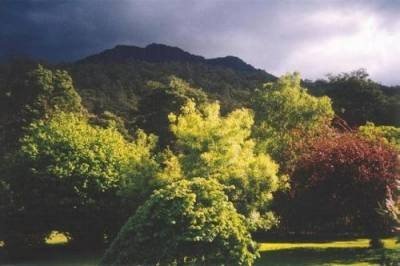
Once upon a time
Many long
Midnights ago
Plumes
Of ash and
Gas
Sheered
A canyon
In ice~
~
Sulphurous
Secrets
Became
Locked
In chunks
Of
Solid
Thick
White
~
Aeons of snow
Passed~
Burying
Static
Electric
Dreams
~
Until
Human guilt
Drove
Cadets of dreams
To nature's stage~
Hoping
Quizzically
To find
A play
With alternate
Answers
~
(Even a "Waiting for Godot"
Re-run
Would do)
~
But sometimes
Answers have a habit
Of getting lost
In more
Ridiculous
Questions
~
For all they found
Was a mountain~
A volcanic mountain~
Like a rainbow serpent~
Pulsing
Echoes
Echoes
Of some very
Ancient life
~
Fire
Beneath
The ice
~
They left
Empty handed
~
The only sign
Some monumental
Wisdom
Passed by
Was the river
Coursing
Through veins
On bland brows
~
Snaking
Melting
Smiling
~
In response to "Ancient Antarctic eruption noted" - BBC News - 20.01.08
Scientists have found what they say is the first evidence of a volcanic eruption under the Antarctic ice sheet.
They believe the volcano erupted about 2,000 years ago, and would have burst through its ice covering, producing a burst of steam and rocky debris...The thickness of ice above suggests the eruption occurred just over 2,200 years ago..."We believe this was the biggest eruption in Antarctica during the last 10,000 years. It blew a substantial hole in the ice sheet, and generated a plume of ash and gas that rose about 12km into the air."...The Hudson Mountains lie close to Pine Island Glacier, one of the West Antarctic glaciers whose flow has accelerated in recent years...But volcanoes which are not conspicuously active at present may also be generating heat under the ice..."This complicates things. However, it cannot explain the more widespread thinning of West Antarctic glaciers that together are contributing nearly 0.2mm per year to sea level rise."
They believe the volcano erupted about 2,000 years ago, and would have burst through its ice covering, producing a burst of steam and rocky debris...The thickness of ice above suggests the eruption occurred just over 2,200 years ago..."We believe this was the biggest eruption in Antarctica during the last 10,000 years. It blew a substantial hole in the ice sheet, and generated a plume of ash and gas that rose about 12km into the air."...The Hudson Mountains lie close to Pine Island Glacier, one of the West Antarctic glaciers whose flow has accelerated in recent years...But volcanoes which are not conspicuously active at present may also be generating heat under the ice..."This complicates things. However, it cannot explain the more widespread thinning of West Antarctic glaciers that together are contributing nearly 0.2mm per year to sea level rise."






No comments:
Post a Comment